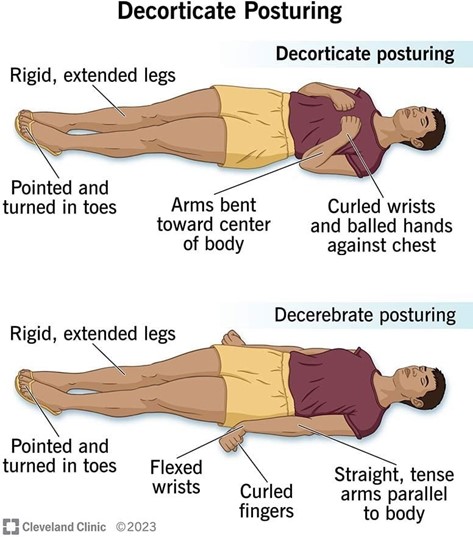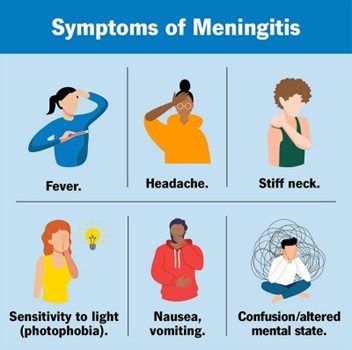A nurse is collecting data from a client who has increased intracranial pressure and is informed by the charge nurse that the client demonstrates decorticate posturing. Which of the following findings should the nurse expect to observe?
Extension of the extremities
External rotation of the lower extremities
Pronation of the hands
Plantar flexion of the legs
The Correct Answer is D
a. Decorticate posturing is marked by the flexion of the arms, with the hands clenched into fists and the legs extended and internally rotated.
b. External rotation of the lower extremities is not a characteristic of decorticate posturing. In decorticate posture, legs are held out straight.
c. Pronation of the hands is characteristic of decerebrate posturing, where the arms are extended and pronated.
d. In decorticate posturing, the lower extremities typically exhibit plantar flexion. Additionally, the upper extremities show flexion of the arms, wrists, and fingers with adduction of the arms.

Nursing Test Bank
Naxlex Comprehensive Predictor Exams
Related Questions
Correct Answer is C
Explanation
A.Obtaining a throat culture specimen might be necessary if a throat infection is suspected, but it is not the immediate priority without first assessing the presence of fever or other systemic signs.
B. Performing a complete blood count could be useful in diagnosing underlying conditions or infections but is not the initial action; the temperature check provides immediate information about potential systemic infection.
C.Check the client's temperature.Headache and stiff neck are symptoms that could be associated with various conditions, including infections such as meningitis. A fever often accompanies infections, and checking the client's temperature helps in identifying if there is a fever, which could be indicative of an infection requiring further evaluation and treatment.
D. Administering an oral analgesic could provide symptom relief but does not address the underlying cause of the symptoms. It is essential first to assess the client’s condition fully before initiating symptomatic treatment.

Correct Answer is A
Explanation
a.Skeletal traction is often better than skin traction for reducing and maintaining alignment of a fracture because it involves the insertion of pins, wires, or screws directly into the bone, allowing for greater force and stability.
b.Clients in skin traction typically have less mobility compared to those in skeletal traction. Skin traction is usually used for short-term purposes or less severe fractures and involves attaching weights to the skin using adhesive materials or bandages, which can limit movement to some extent.
c.Skeletal traction involves inserting hardware into the bone, which creates an entry point for potential infection. Therefore, it has a higher risk for infection compared to skin traction, which does not involve invasive procedures.
d.While both types of traction can cause discomfort, skeletal traction is typically more invasive and can be associated with more discomfort and pain due to the pins or wires inserted into the bone. Skin traction, while uncomfortable due to the adhesive and pressure on the skin, generally causes less discomfort than skeletal traction.
Whether you are a student looking to ace your exams or a practicing nurse seeking to enhance your expertise , our nursing education contents will empower you with the confidence and competence to make a difference in the lives of patients and become a respected leader in the healthcare field.
Visit Naxlex, invest in your future and unlock endless possibilities with our unparalleled nursing education contents today
Report Wrong Answer on the Current Question
Do you disagree with the answer? If yes, what is your expected answer? Explain.
Kindly be descriptive with the issue you are facing.
